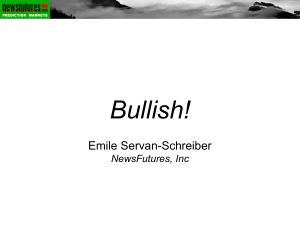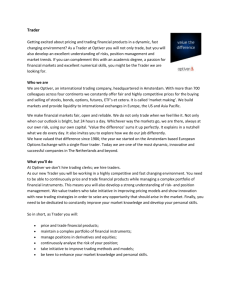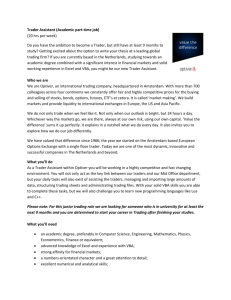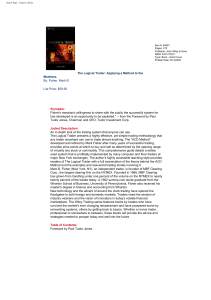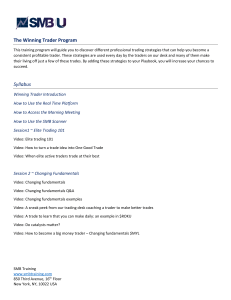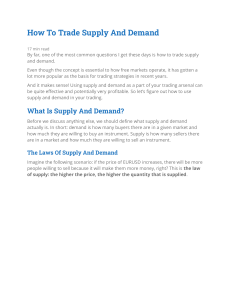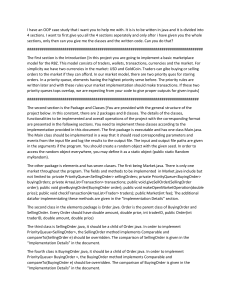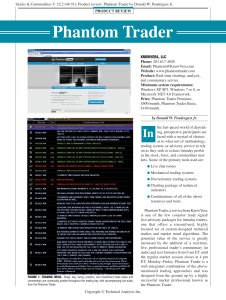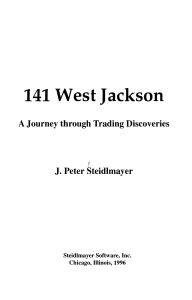Moore and Payne Discussion by Ian Marsh Cass Business School
advertisement
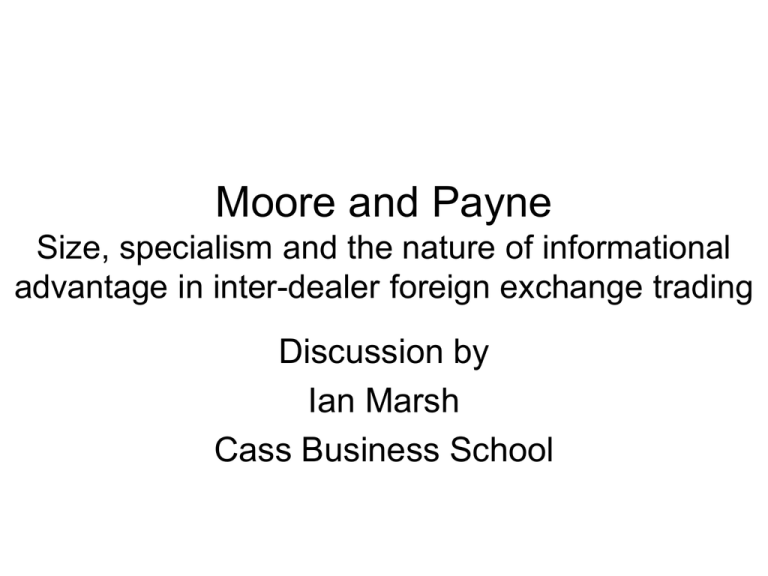
Moore and Payne Size, specialism and the nature of informational advantage in inter-dealer foreign exchange trading Discussion by Ian Marsh Cass Business School Selling points of paper • This paper tries to address the key issue in foreign exchange rate modelling • What makes foreign exchange rates move?” st 1 j Et ft j j 0 s 1 Et f j j 0 m t j 1 E f measured fundamentals j j 0 t u t j unmeasured fundamentals The dire performance of macro s 1 j Eˆ t ft m j t j 0 t 1 j 0 j 0 j u j m ˆ E f 1 E E f t t j t t t j unmeasured fundamentals expectational errors The stunning performance of micro But what is going on here? Why is there such a huge correlation between exchange rate changes and order flow? 1. Information in order flow 2. Risk premia 3. Feedback trading 4. Something else Moore and Payne Argue that if it is all about information then there should be differences in the way prices react to deals by traders likely to have asymmetric information Show by means of regression of price impact on indicator dummies that price impacts differ in plausible ways So What? That’s fine but so what? It isn’t clear to me we learn a vast amount from this Most importantly, we do not learn what the title suggests we will: “Size, specialism and the nature of informational advantage in inter-dealer foreign exchange trading” So What? What we learn is that when a big or specialist trader supplies liquidity he suffers smaller costs than a smaller generalist trader Similarly, when a big or specialist trader takes liquidity he creates a larger price impact than does a smaller generalist trader Price Discovery How does the market learn from trading? Deals are anonymous on this platform Only the taker and maker know identities Everyone else just sees an arrow on screen There is no information revelation So how does the rest of the market differentiate between a OMST deal (0.59 price impact) and a SMOT (0.14)? Trader Skill Maybe price impacts reflect information differences and the market can perform miracles But differential PIs might just reflect trader skill even if all traders are uninformed A $:€ trader for a big bank won’t keep his job long if he gets caned every time he supplies liquidity and doesn’t make a gain when he initiates a trade Informational Advantages The paper is pretty silent on where these large specialist traders get their info from It is mostly thought that they get the info from their customers Customer might be a smart hedge fund that knows the true value of FX Or might be a dumb corporate who reveals that UK is doing well by selling £ to repatriate earnings Or something vague like liquidity preference shifts Informational Advantages This paper tells us nothing about the nature of the information that leads big specialist traders to trade well To get that, the authors would need to look at customer order flows, not the interdealer flows they use here Informational Advantages The analysis is at such a high frequency that I worry the customer-dealer info link is weakened The depvar is price change from -5 to +10 trades in main results, 1 minute in $/€ Is this really the appropriate horizon over which to measure information effects? Cheap Shot Finally, having taught financial statistics for a term, a cheap shot We criticise macro FX modellers for not being able to explain much using macro fundamentals But the R2s in this paper are around 1% And price impact coefficients are fractions of a basis point
